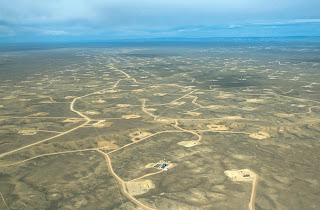 This spring HCPC hosted a Wildlife Connectivity workshop aimed at developing a Blue Mountains Ecoregional Connectivity Plan through a collaborative, science-based effort. (See 2/4/2010 Blog Post for additional details on our goal to initiate mapping of regional wildlife connectivity corridors).
This spring HCPC hosted a Wildlife Connectivity workshop aimed at developing a Blue Mountains Ecoregional Connectivity Plan through a collaborative, science-based effort. (See 2/4/2010 Blog Post for additional details on our goal to initiate mapping of regional wildlife connectivity corridors).We hosted this workshop in conjunction with the Washington Habitat Connectivity Working Group‘s Transboundary Connectivity Summit in Richland, WA. http://www.dfw.state.or.us/conservationstrategy/docs/pac_nw_wl_connections_ws_102008/Wildlife%20Habitat%20Connectivity%20in%20Washington.pdf
The Transboundary Summit and Blue Mountains connectivity workshop brought together a diverse group of state and federal agency wildlife experts, GIS and habitat modeling specialists, federal land managers, academic scientists, Native American Tribes and conservation NGOs to address wildlife connectivity efforts underway in WA, OR, ID and British Columbia.
HCPC’s Ecosystem Coordinator, David Mildrexler, gave a presentation on our vision for a Blue Mountains ecoregional connectivity plan aimed at protecting and enhancing the ability of native species to move within and through our vast ecoregion. Participants expressed a great deal of enthusiasm for HCPC’s efforts to protect the Hells Canyon-Wallowa and greater Blue Mountains ecoregion as a lynchpin ecosystem—an inherently valuable area for wildlife movement between the Rockies and Cascades.
The workshop was a half-day intensive review of our focal species selection—a list of species intended to represent the habitat and movement needs of a broad array of local wildlife, from wide ranging carnivores like wolves, wolverine and marten to critters that help address movement at smaller scales like the Sage grouse and Western Toad. Several regional wildlife experts provided critical feedback on each focal species, enabling us to move forward with a scientifically sound connectivity planning process.
The Transboundary Summit and Blue Mountains workshop were great ways to learn from other wildlife connectivity efforts, share data, garner scientific support, and build enthusiasm for mapping wildlife movement corridors throughout the Blue Mountains. We are also very hopeful that the partnerships that emerge and grow from this event will strengthen our ability to successfully use this cutting-edge conservation approach to influence local land management decisions in a way that better protects our wildlife populations well into the future. We thank TransWild Alliance (www.transwildalliance.org) for sponsoring our connectivity workshop!
Connectivity Campaign Director, Jennifer Schwartz
photo: David Mildrexler, Ecosystem Conservation Coordinator giving Blue Mountains presentation.






